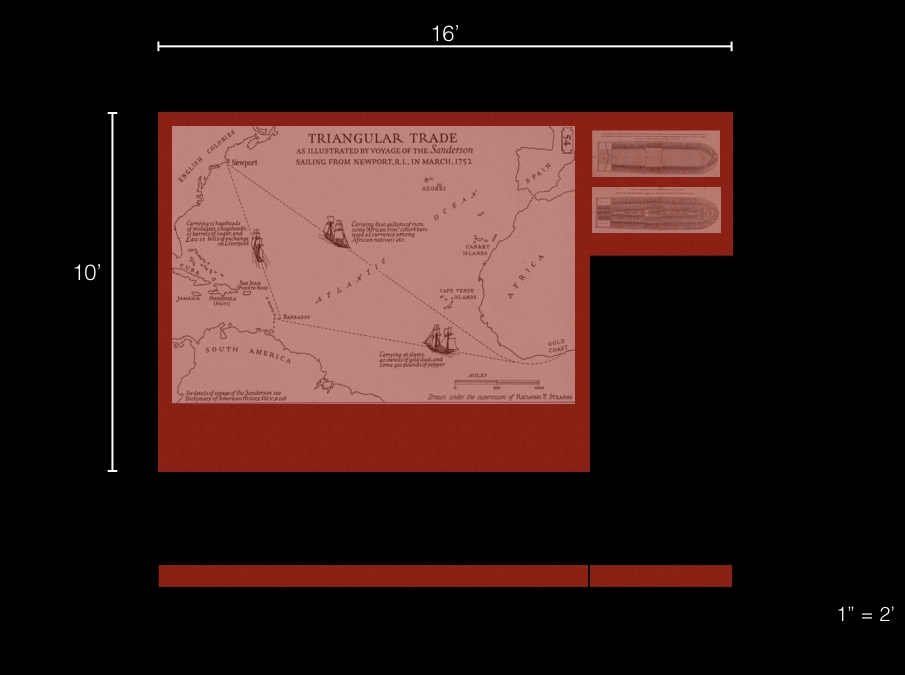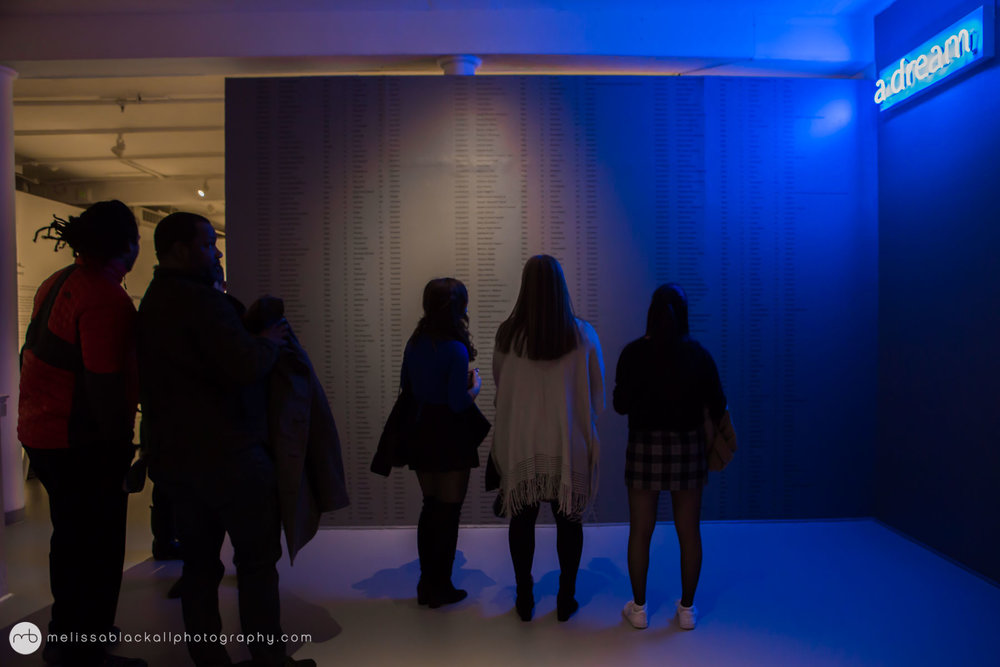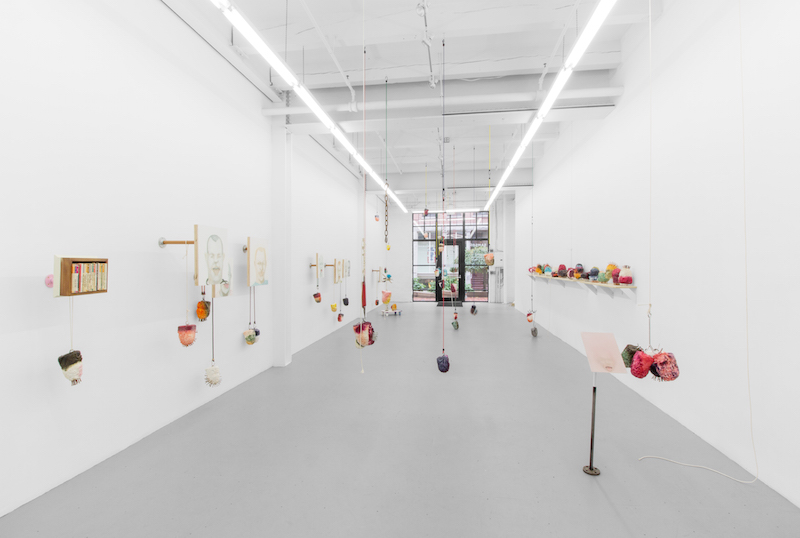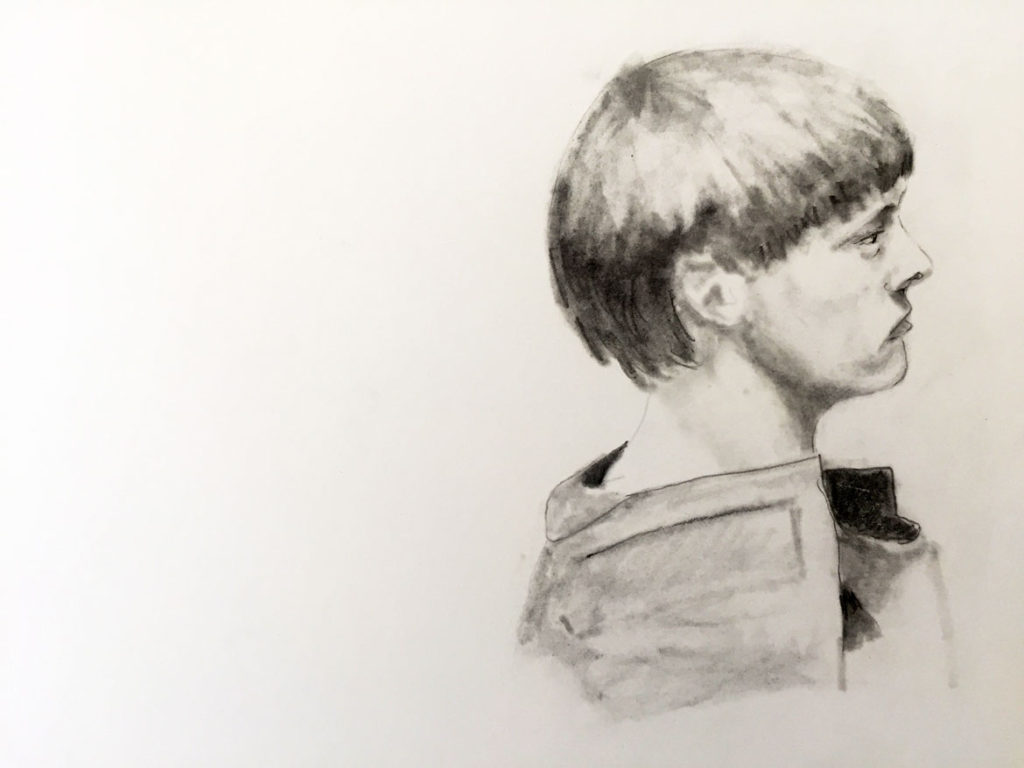Late last month, Boston’s Isabella Stewart Gardner Museum installed a new public artwork, a giant banner hanging down the facade of its building by Boston artist Steve Locke.
It’s titled “Three Deliberate Grays for Freddie (A Memorial for Freddie Gray)” and consists of three bars of color—red, brown, gray.
“I’ve been thinking about Freddie Gray,” Locke says. Gray was arrested by Baltimore police in April 2015, put in a police van and driven away. The African American man somehow came out the other side with injuries that killed him. Police faced charges in Gray’s death, but none of the trials have resulted in convictions. That terrible story has stuck in Locke’s mind, as well as the resonance of Gray’s name—the name of a color that seemed symbolic somehow of the centuries-old conflict between whites and people of color in this country.

After Locke had an artist residency at the Gardner Museum, contemporary art curator Pieranna Cavalchini invited him to do a public art project there. Locke says, “I found a whole bunch of photos of Freddie Gray, then I picked out three that I was most interested in”—Gray looking directly at the camera on a street corner in his neighborhood, Gray arrested by police and “his leg is broken and you can clearly see it,” Gray in the hospital on life support.
Locke digitally averaged the colors of each photo, then hand-mixed paint of those three hues. He took his swatches to a paint store to get cans of the colors made up. He used those to paint three separate panels, an abstract composition of stripes. (That now hangs in the Gardner director’s office, Locke says. “I gave it to them.”) Then a printer matched his painting to create a giant banner to hang on the outside of the Gardner Museum.
“I’m a big believer in not looking away,” Locke says. “You can’t turn away from that stuff.”

Help Wonderland keep producing our great coverage of local arts, cultures and activisms (and our great festivals) by contributing to Wonderland on Patreon. And sign up for our free, weekly newsletter so that you don’t miss any of our reporting.
The banner is one of a number of Locke projects attracting attention this summer. Boston Mayor Marty Walsh has been complimentary of a proposal Locke recently floated for a Boston “Auction Block Memorial at Faneuil Hall: A Site Dedicated to Those Enslaved Africans and African-Americans Whose Kidnapping and Sale Here Took Place and Whose Labor and Trafficking Through the Triangular Trade Financed the Building of Faneuil Hall.” Locke would install a 10-foot by 16-foot bronze plate at ground level with “raised text and image of the routes and supplies of the Triangular Trade.” He plans to keep the bronze heated at 98.6 degrees “to evoke the presence of those Africans and African-Americans who came into chattel slavery through Boston. … This will make touching the work an intimate and reverent experience as if you are touching a living person.”
And early in July, Locke, as a City of Boston Artist-in-Residence, launched “Love Letter to a Library,” with banners reading “I Remember Everything You Taught Me Here” hung outside the Copley Square entrance to the Boston Public Library’s Central Library. It will be on view there through October. The project will also include displays throughout the library system throughout the summer and early fall.
“From the time I came to Boston back in 1980,” Locke has said, “the library, particularly the McKim Building, was a place of discovery, refuge, and solace. There, I learned about Sargent, met Andy Warhol, fell in love, and mourned loved ones. As I moved to various Boston neighborhoods, the branch libraries have allowed me to learn about my community and about myself as an artist and as a citizen. This project is my way of saying ‘thank you’—to the library and its people for what they do for people like me every day.”

These projects reflect a shift that Locke seems to have made between his major 2013 solo exhibit “there is no one left to blame” at Boston’s Institute of Contemporary Art and his 2016 piece “A Partial List of Unarmed African-Americans who were Killed By Police or Who Died in Police Custody During My Sabbatical from Massachusetts College of Art and Design, 2014-2015.”
For his ICA show, Locke exhibited roughly rendered painted portraits of guys—their bodies, their faces, often sticking out their tongues. Many of the paintings were mounted atop vertical pipes. At the time, Locke said war and terrorism, masculinity and gay life, prejudice against African Americans and women were among the topics on his mind.
“I was thinking about my own place in the world now that everyone I knew is gone,” Locke told me recently. “The AIDS epidemic destroyed everyone I knew. My parents are gone. I was surrounded by ghosts.”

“A Partial List…” was a roster names and dates and reported causes of death listed on a wall of the Boston Center of the Arts in the 2017 exhibit “I Dread to Think…”
http://www.bcaonline.org/i-dread-to-think.html
“This is just what’s in the world right now,” Locke says. “I’m just responding to what’s in the world.”
Locke’s shift has corresponded to rise of smart phones, which have increasingly allowed people to record and share video of beatings and murders of African-Americans across the country. Killings perpetrated by police and others. The violence is not a new phenomenon, but the video documentation of it and ease of widespread sharing of those recordings by social media and news reporters is new. This has brought the systemic violence against black Americans to the attention of many more white Americans, made the violence more inescapable for Americans of color, and sparked activism like Black Lives Matter.
“It’s not new at all. It’s always been known,” Locke says. “Cops have one job: to beat up poor people or beat up black people. … They’re to protect property. They’re not there to protect people. … Police have been killing people for a long time, but now we have technology that shows it. And people still don’t believe it.”
“I never really made inscrutably personal abstract work. My work has been through portraiture,” Locke says. “I think the thing that’s different is that inward look is now reflected through other kinds of media, which is more legible to people.”

In 2016, he presented simultaneous exhibitions at two commercial galleries on Harrison Avenue in Boston: “Family Pictures” at Gallery Kayafas (historical images of lynchings and slave ships) and “The School of Love” at Samson (a series of portrait paintings and plaster heads—meant to represent his own—suspended by ropes and hooks and studded with nails).
“My work has always been about the dealing of power, who has it, who gets to keep it and how pictures support it,” Locke says.
For a about a year now, since his work on “Freddie Gray,” Locke has been making a series of drawings called “Killers,” portraying “people who have murdered black people. Most of them are white. There’s an Asian person, a police officer in New York. It’s also vigilanties, people like Dylann Roof,” who murdered nine people in a South Carolina church in 2015. Locke draws them from photographs circulated in news reports and online.
“I try to make a beautiful drawing of a horrible person. That’s just hard. It’s really, really hard,” Locke says. “I think there’s something radical about that act of empathy, to make them as beautiful and human as possible.”

“They’re floating in this whiteness, this aggressive white support of the paper,” Locke says. “It’s about the amount of whiteness that supports the process. … How did Dylann Roof happen?”
Other “Killers” he’s drawn include the murderers of James Byrd in Texas in 1998 and police officer Darren Wilson who killed Michael Brown in Ferguson, Missouri, in 2014.
“Spending a lot of time with killers is difficult,” Locke says. “The more I do it, the more difficult it becomes. So I think I might be getting to the end of the project.”
Help Wonderland keep producing our great coverage of local arts, cultures and activisms (and our great festivals) by contributing to Wonderland on Patreon. And sign up for our free, weekly newsletter so that you don’t miss any of our reporting.
